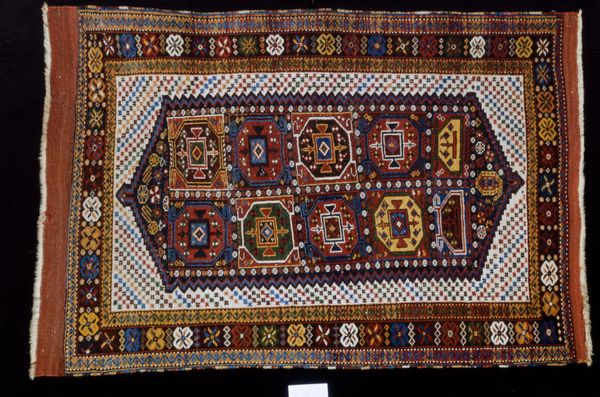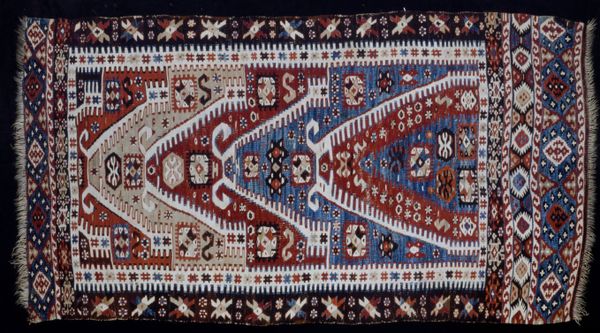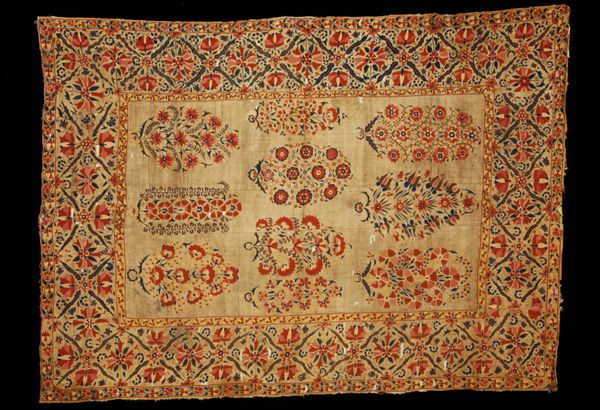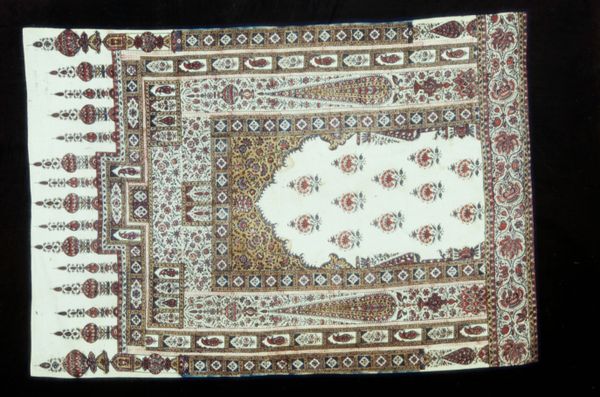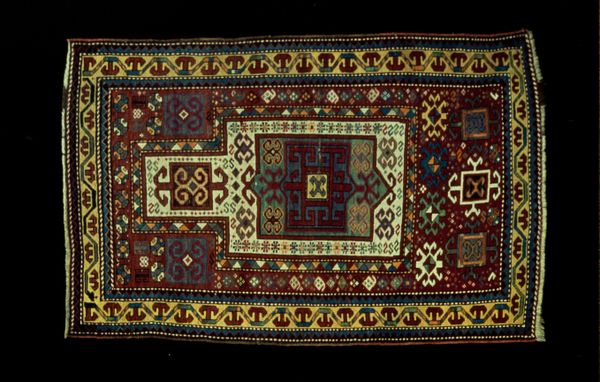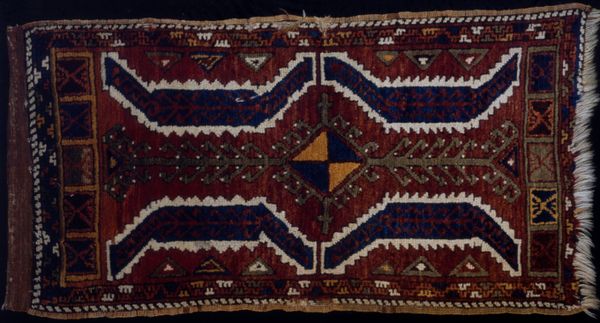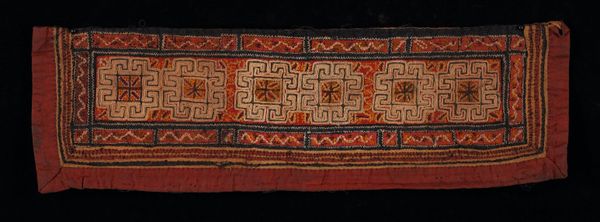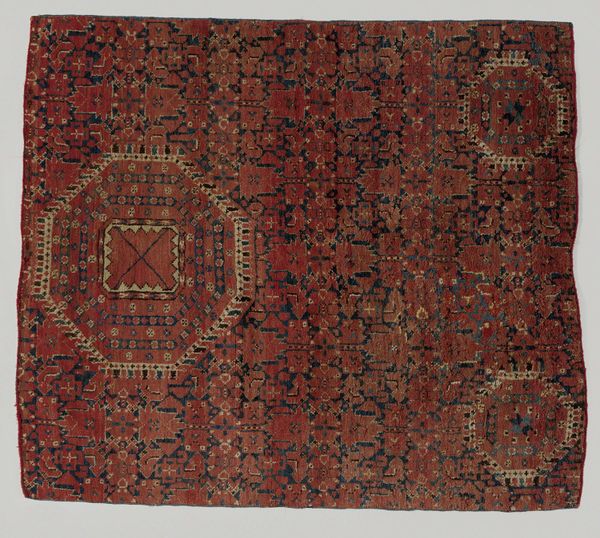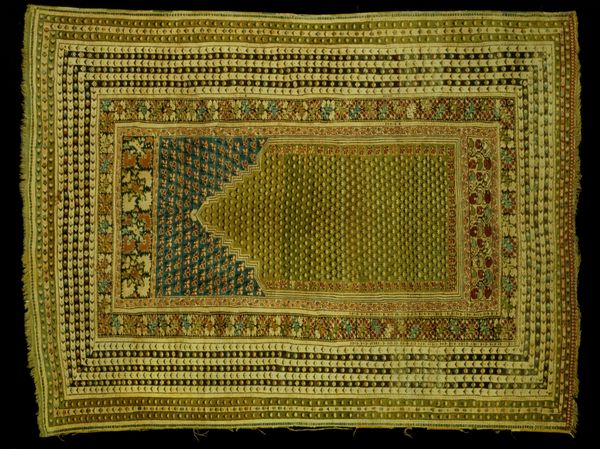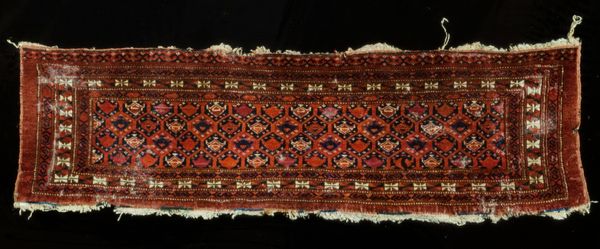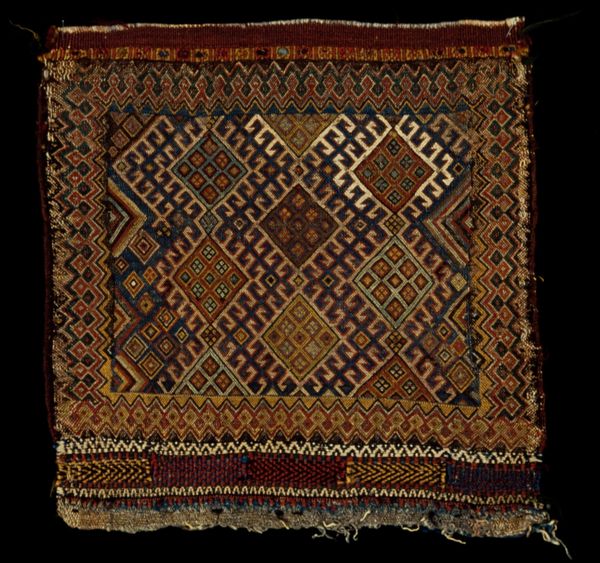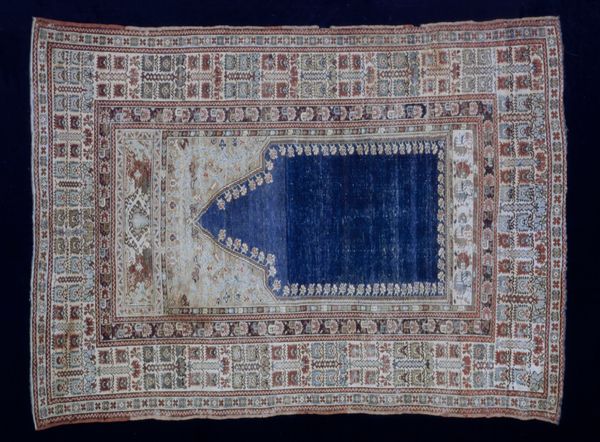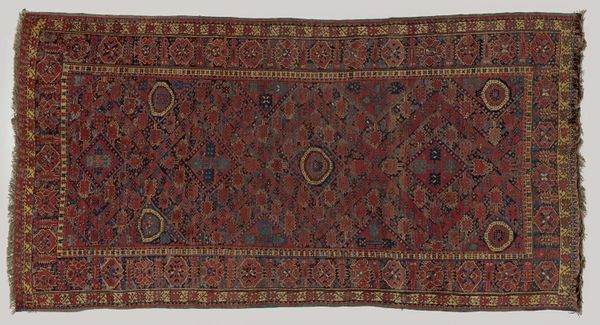
textile
#
pattern heavy
#
natural stone pattern
#
loose pattern
#
textile
#
geometric pattern
#
abstract pattern
#
geometric
#
repetition of pattern
#
intricate pattern
#
pattern repetition
#
islamic-art
#
decorative-art
#
layered pattern
#
funky pattern
Dimensions: 16 x 58 in. (40.64 x 147.32 cm)
Copyright: Public Domain
This camel bag was made by an anonymous weaver, probably in Central Asia. The weaver would have created the textile using materials and techniques that have been handed down through generations. The bag’s motifs and colours are not merely decorative. They carry symbolic meanings that reflect the weaver's cultural heritage and identity. The geometric patterns, for instance, may represent tribal affiliations, natural elements, or spiritual beliefs. As a historian, I'm drawn to the social and cultural context in which this bag was created and used. Camel bags like these were essential for nomadic communities, serving as storage containers for goods and personal belongings during migrations. Their functionality speaks to the practical needs of a particular way of life. To fully understand its significance, it's important to study the history and customs of the people who made and used it. You can do this using anthropological studies, historical records, and textile analysis.
Comments
No comments
Be the first to comment and join the conversation on the ultimate creative platform.
